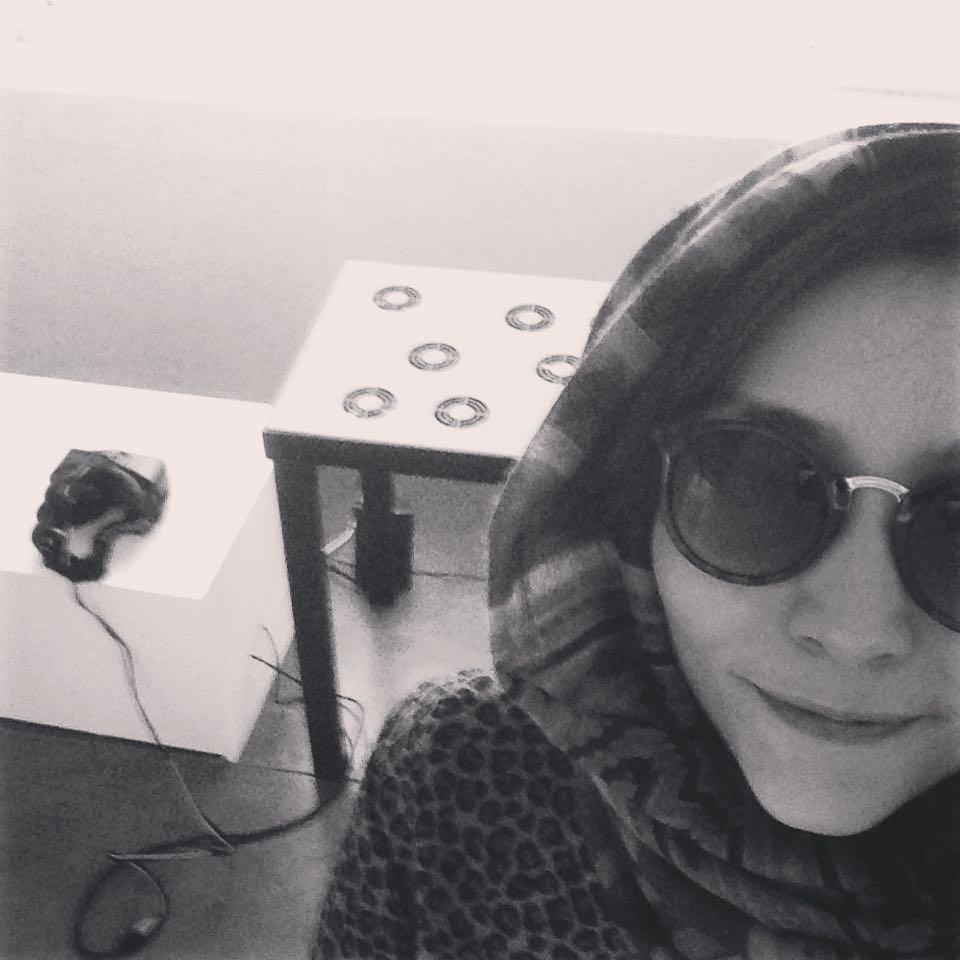Graspable Noise: a tactile VR experience.


A small dark room is used to create an atmospheric expanded space outside the virtual world. It is composed by a wood black table, a chair, a VR headset with a motion sensor attached, speakers and a dim LED light for orientation purposes. The table is build with 11 computer fans running at di erent RPM and distributed in a specific way to create a topography field of air flow. The wind is placed as an abstract physical representation of the digital noise and it is used because of its turbulent force, ungraspable and non-material quality. In addition, an ambience soundtrack was composed using the fan motor sounds complemented by dissonant note intervals of second minor. The track plays constantly in the room yet not overlapping the motors’ live sound.
The visual program loops four scenes examining different interactions between the physical and the digital, they are changed after a predefined time, each having their own duration. The hand movements are the central component to trigger the interactions. By hovering the hands around the upper space of the table, the viewer is able to perceive and establish its own connections between the visual scene and the tactile feeling and perception of the wind. The interactions are subtle as not to mimic a game environment in which goals and targets are defined but rather focus on the a ect state of the experience.
Each scene is a series of patterns moving in such way to create a metaphorical noise motionscape. They were composed based on the tactile qualities of the wind, each exploring a possible perceptual and interpretive connection. Said connections are open, leaving to the viewer the role of imbuing the abstract motions with a ect. The motionscape proportions are defined by the physical range of the motion sensor and created to be accessible within an arm’s reach.
The simulations provide a certain feeling of frustration by using unpredicted and somehow unwanted qualities of noise. Furthermore, it makes use of bugs, interruptions, and unpredicted behaviour of the compositions to induce new relations between the tactile and the visual. The final aim of this installation is to explore the a ective potential of motionscapes combined with tactile perception in immersive media.

An emphasis is given to the granular visual texture and its relation to the wind feeling. The viewpoint axis are fixed and the motion is defined by the ‘look around’ head movement. Said movement is important to start the noise effect put in the camera shader, creating a glitch on the path where the motion takes place. The viewer is then able to draw textures with their hands and head motion.
This scene also forces the tracking problem of the leap motion sensor for Mac by rendering both hands as right hand, which makes the left hand seems distorted and misplaced. A hand interaction with the scene objects is also possible by deforming shapes and spinning spheres.

To evoke hand movements, light sources are attached to the hands and in this case, they brighten an already visible set of objects. The camera moves through a pre-defined track at an inconstant speed. The hands are textured with the same pattern as the background as a sort of camouflage. The pattern uses linear and granular textures upon a variety of forms that when lightened create an illusion of transparency and materiality both linked to the perception of the wind.
While it is possible to interact with some shapes by spinning or throwing them, there is not a clear distinction between the interactive and noninteractive objects.

It starts in complete darkness and similar to the previous scene, the camera moves in a predefined path in a slightly faster and inconstant pace, the hand shapes are not rendered, they function as spotlights. The viewer is compelled to move their hands to enlighten the objects making them visible. The feeling of ‘this is not working’ is often perceived at the very beginning. The hand-spotlight shows a linear texture made with overlapping long rectangles. The idea is to simulate the sensation of hovering the hands over a texture such as grass leaves that is provided by the di erent source of air flowing from the fans.

The last scene represents a live growth and accumulation of noise, lasting for only a few seconds. Head and hand movements are still somehow visible yet not recognisable, which often engages the viewer in more blunt movements. It was created to give a closure to the installation by giving the impression that the noise reached a peak and the system finally stopped working.
• Exhibited at Next-Level Festival photo by Max Höller

• Exhibited at Plüschow Schloss - Polylux Exhibition

• Published at RadianceVR
• Exhibited at TADAEX Tehran

• Exhibited at Lab30 Augsburg

